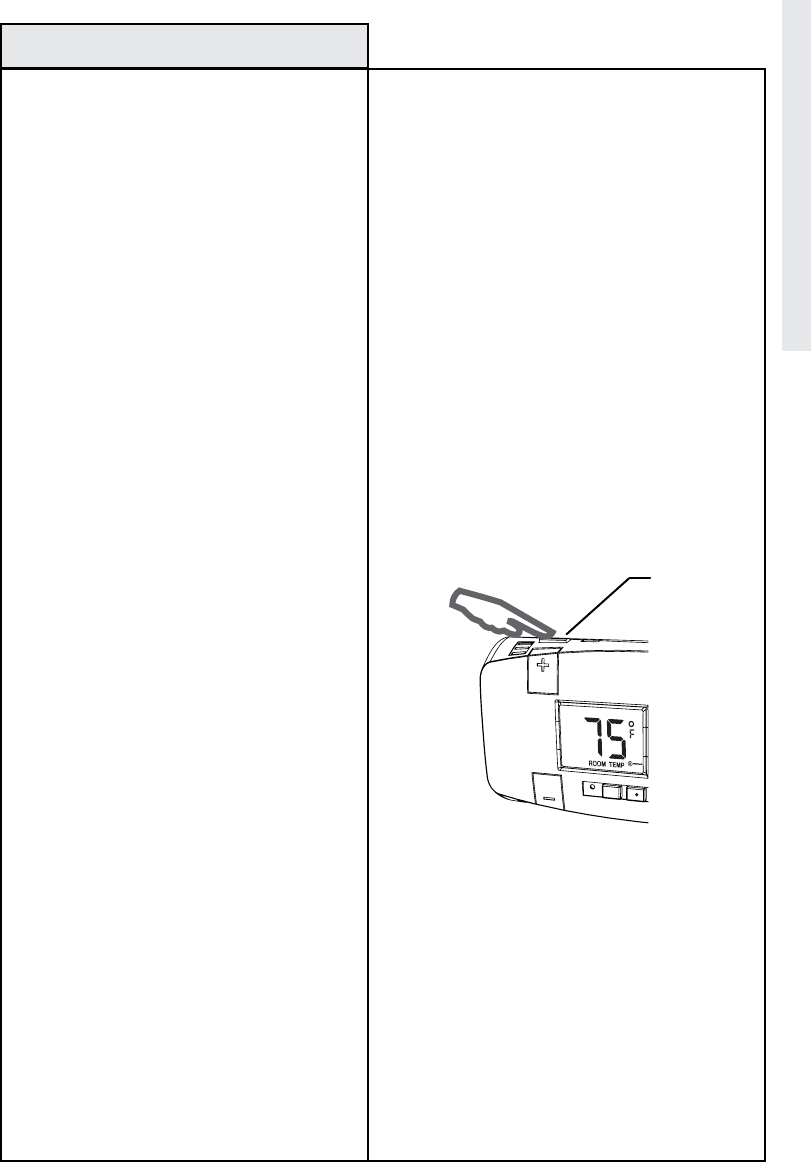
27
Z-Wave® Programming
If your controller does not support full thermostat
device class functions, it may still be able to control
the NORMAL/SAVE ENERGY mode (ie. set back) of
the thermostat through basic ON/OFF commands
similar to those used by lighting switches. By
sending the basic commands, ON and OFF, to the
thermostat, the sending controller can switch
between NORMAL (ON) mode and SAVE ENERGY
(OFF) mode.
TIP: Set the thermostat into the mode (NORMAL
or SAVE ENERGY) before depressing the
BIND button to include the thermostat into a
specic SCENE on the controller. This will
allow the controller to learn the NORMAL or
SAVE ENERGY mode for the specic scene.
See the example for the Wayne-Dalton Wireless
Gateway, WDHA-12R, on page 32.
ALTERNATE PROGRAMMING DIRECTIONS:
(For controllers that do not support thermostat
device class or do not support basic command
class):
If your controller does not support any thermostat
device class functions, and also does not support
basic ON/OFF commands used by lighting switches,
then a special compatibility feature in your Wayne-
Dalton Z-Wave
® enabled thermostat is available so
that it can be controlled by binary switch command
class ON/OFF commands.
The special compatibility feature is accessed by
pressing and holding the thermostat BIND button
for 4 seconds, then releasing the button during
controller programming. This feature allows
generic and older Z-Wave
® controllers to control
the NORMAL (ON) mode and SAVE ENERGY (OFF)
mode of the thermostat using binary switch
command class ON/OFF commands. See the
programming example on page 30 for the Wayne-
Dalton Handy Remote, HA-09WD.
NOTE: Your Wayne-Dalton thermostat will
work in a network using both normal and
alternate programming to accommodate
all controllers present in the network.
Z-Wave® Programming
and Operation (continued)
4 Seconds
BIND button
NOTE: An example of programming to a
controller using the alternate programming
method is shown on page 30.
AUTO
ON
FAN
HEAT
COOL
SAVE
ENERGY
NORMAL
RESET
COOL


















